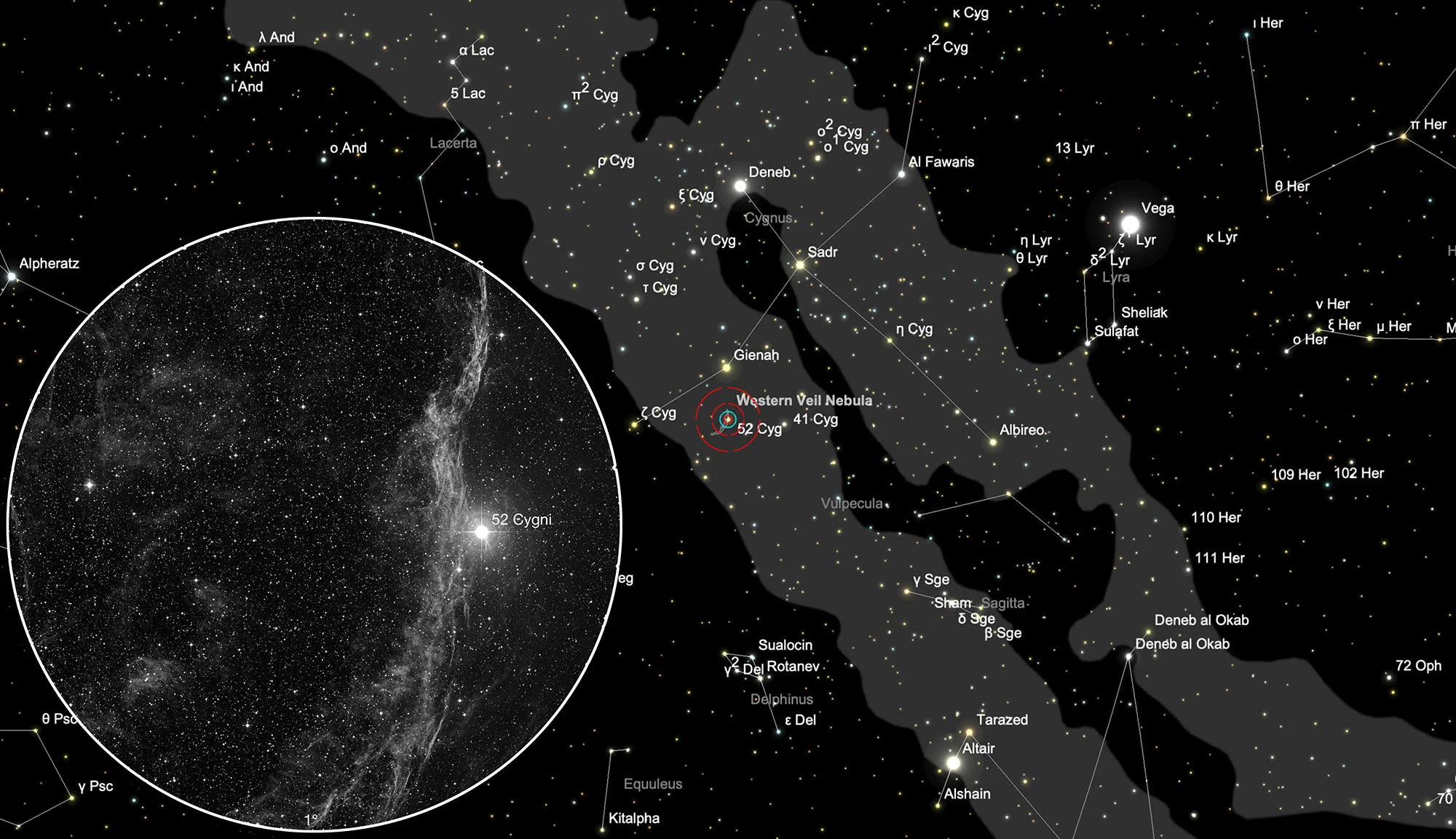Cirrus Nebula (NGC 6960+)
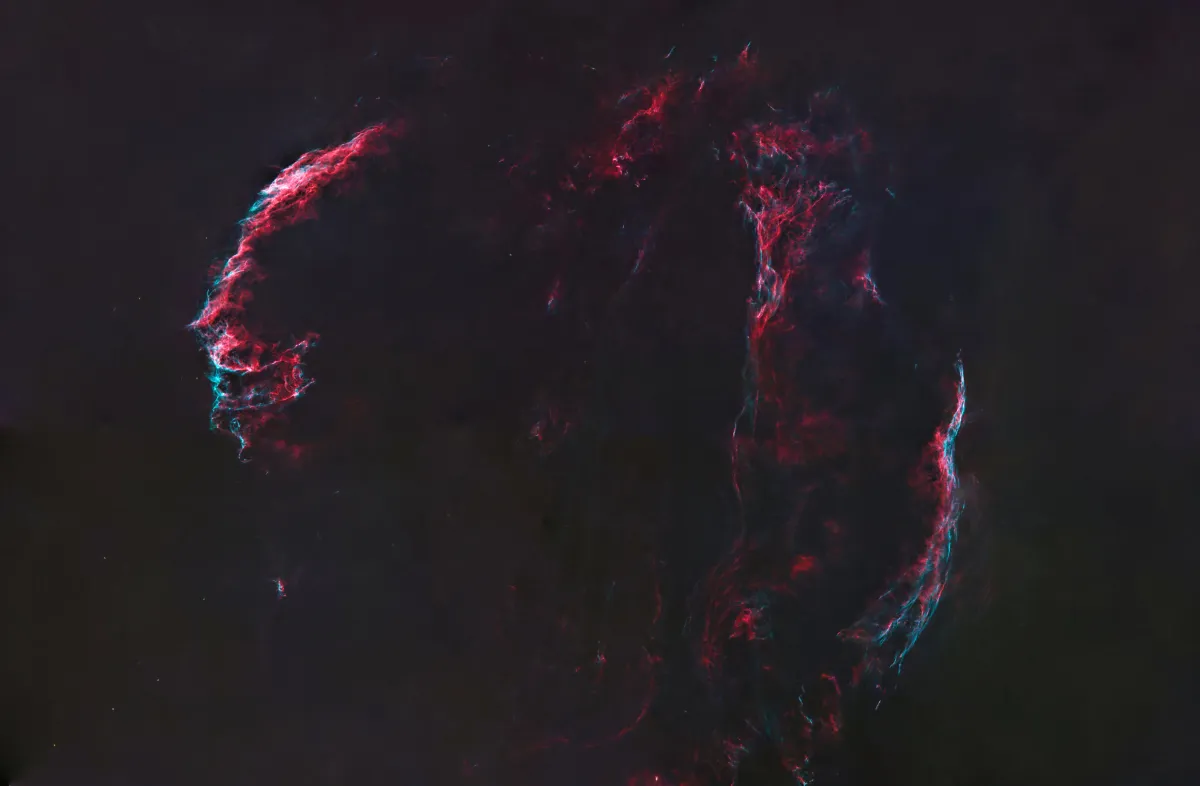
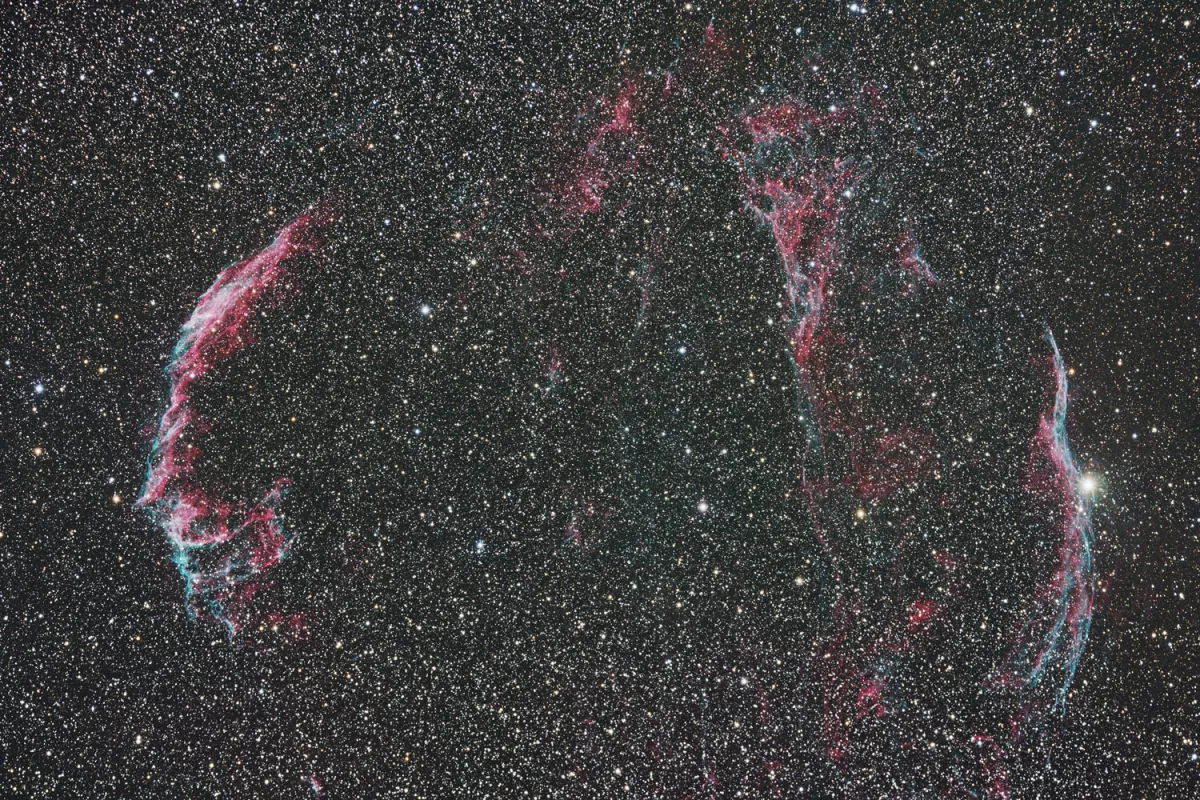
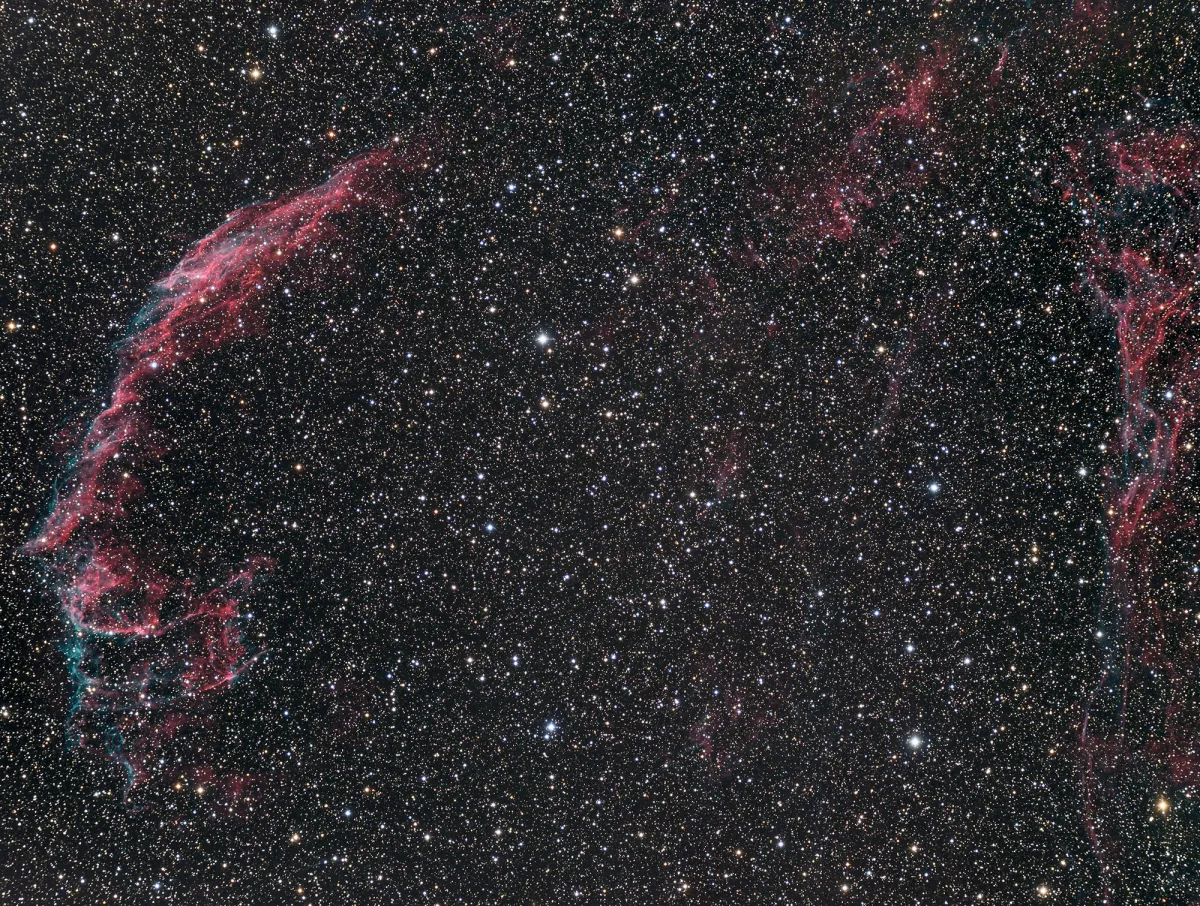
History
The Cirrus Nebula is probably one of the most fascinating, largest and most beautiful nebulae in the northern sky and has therefore been given numerous names: «Bridal Veil Nebula» or just «Veil Nebula» and «Cygnus Loop». The name «Filamentary Nebula» is often used only for the eastern part of NGC 6992 and the name «Network Nebula» or «Lacework Nebula» for the western part of NGC 6960. But sometimes one also uses these names for the entire nebula.
The Cirrus Nebula was discovered visually by William Herschel in 1784 with his 18.7 inch reflecting telescope. For a long time the true nature of these wisps of nebula was unknown and they were given different numbers in the «New General Catalogue», as well as in the «Index Catalogue». It seems that the numbering was later was abandoned, as many seemingly independent wisps of the nebula are no longer labeled.
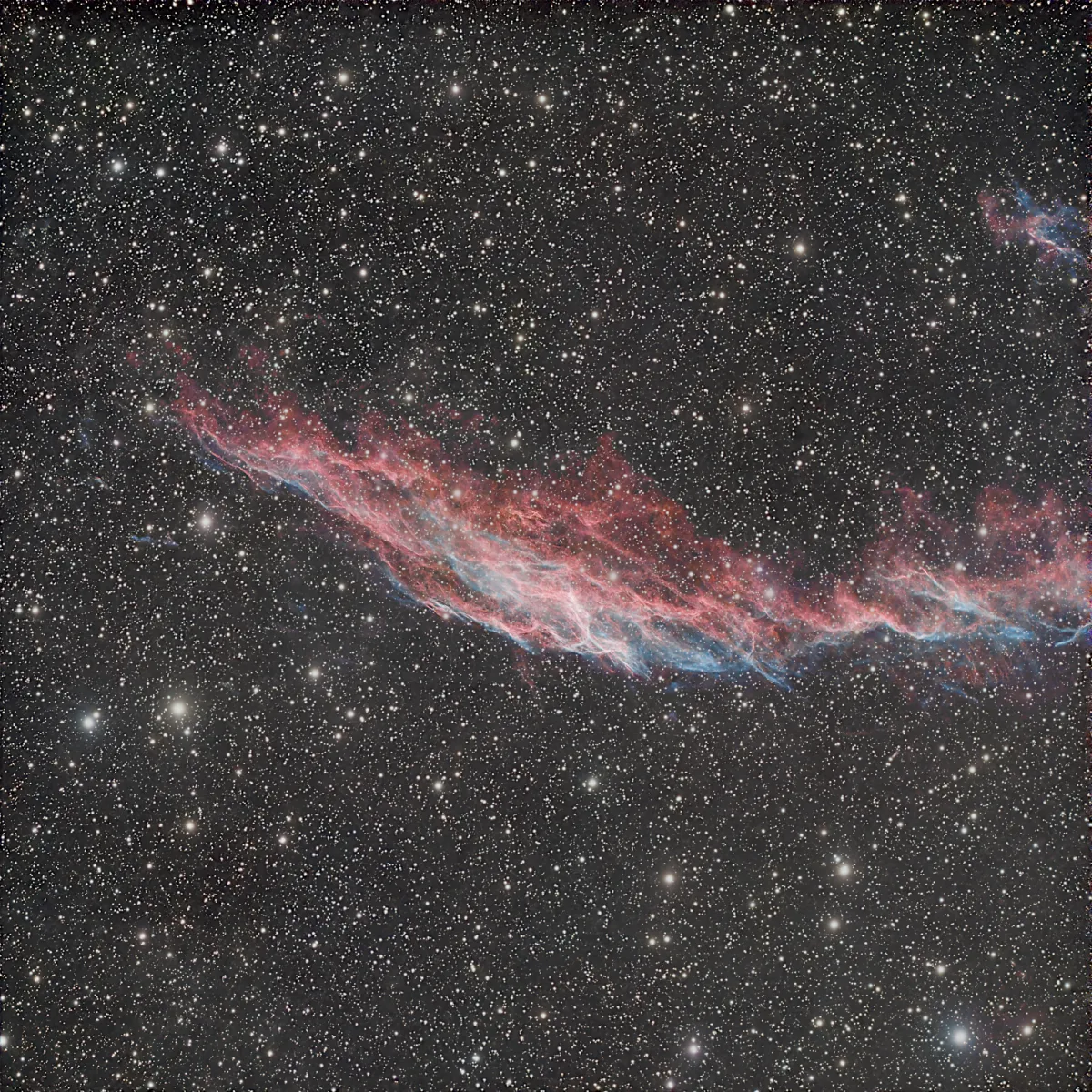
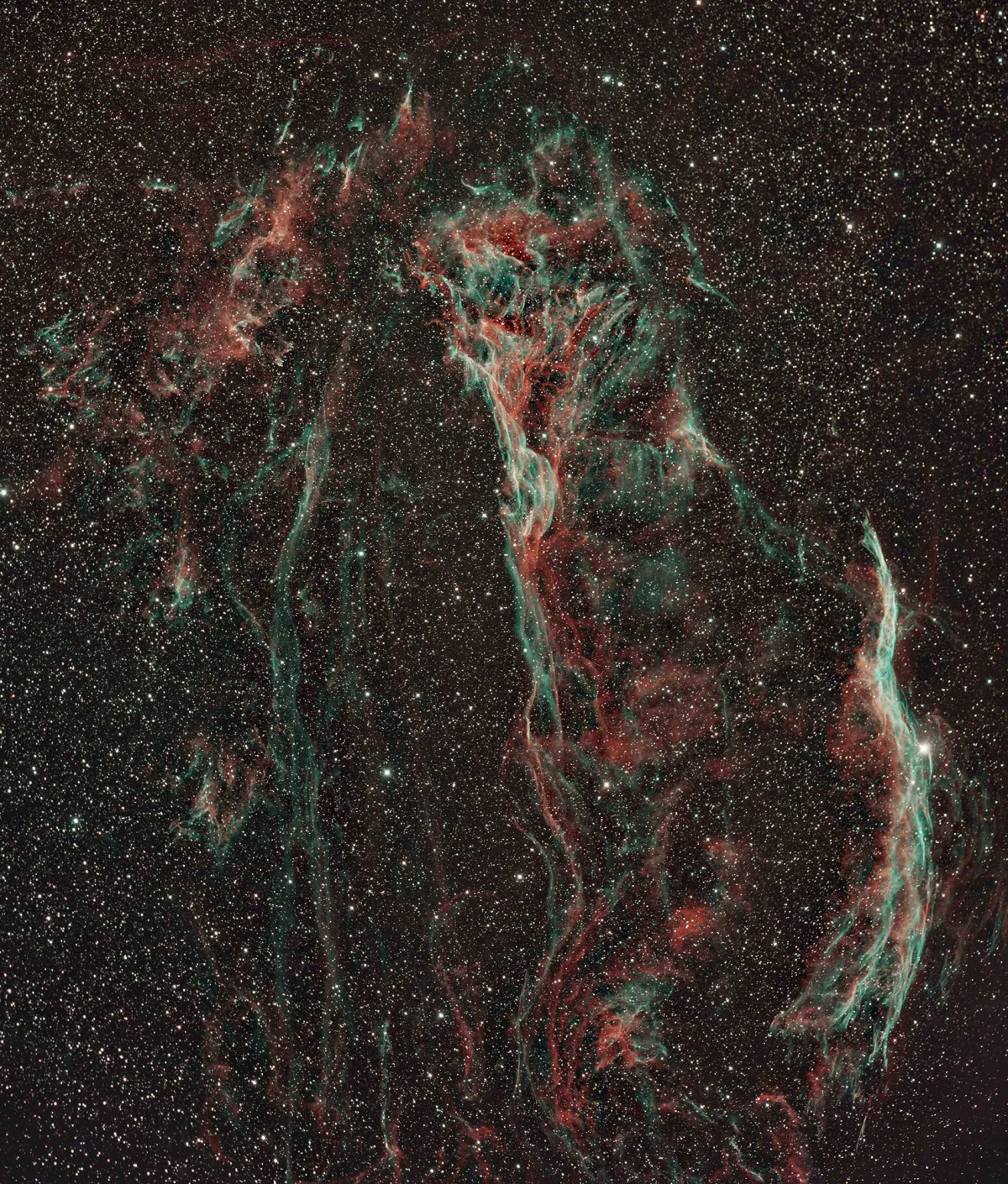
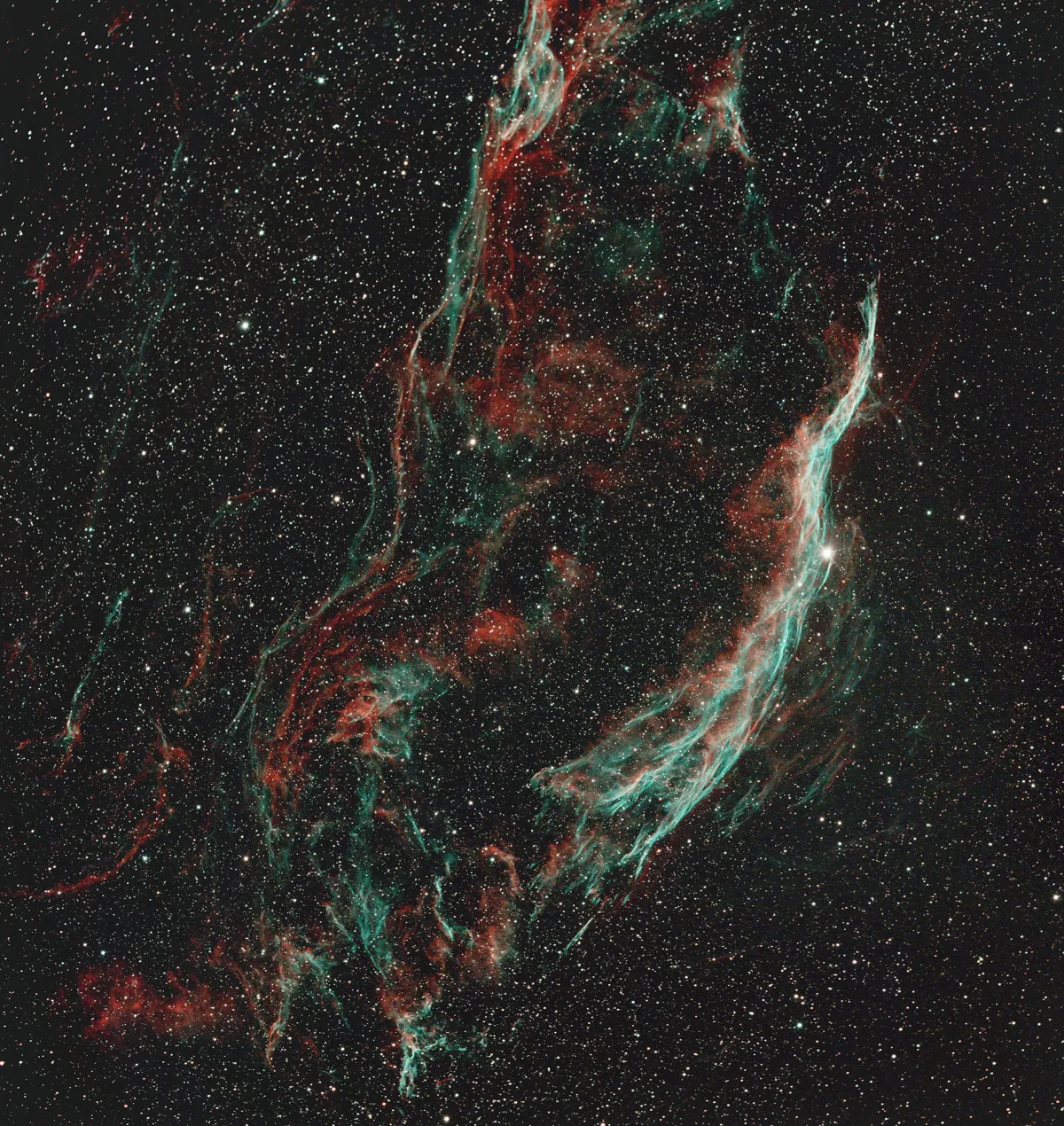
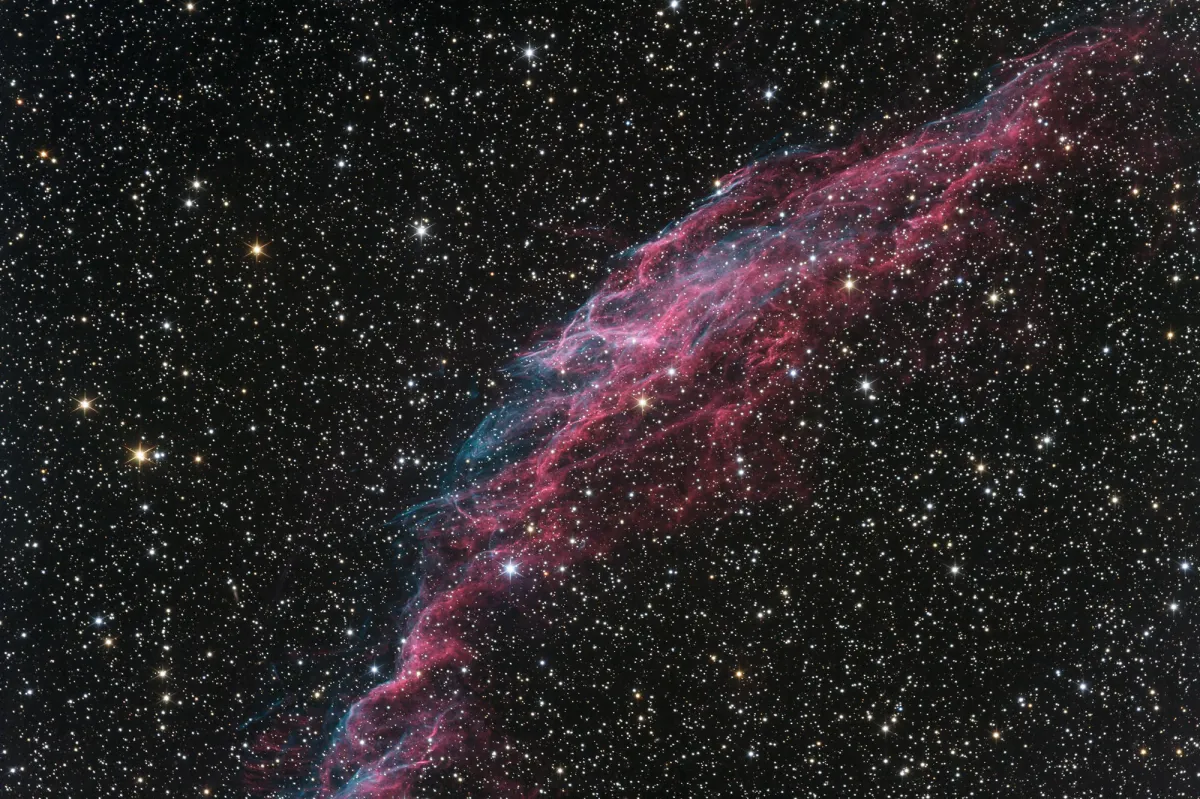
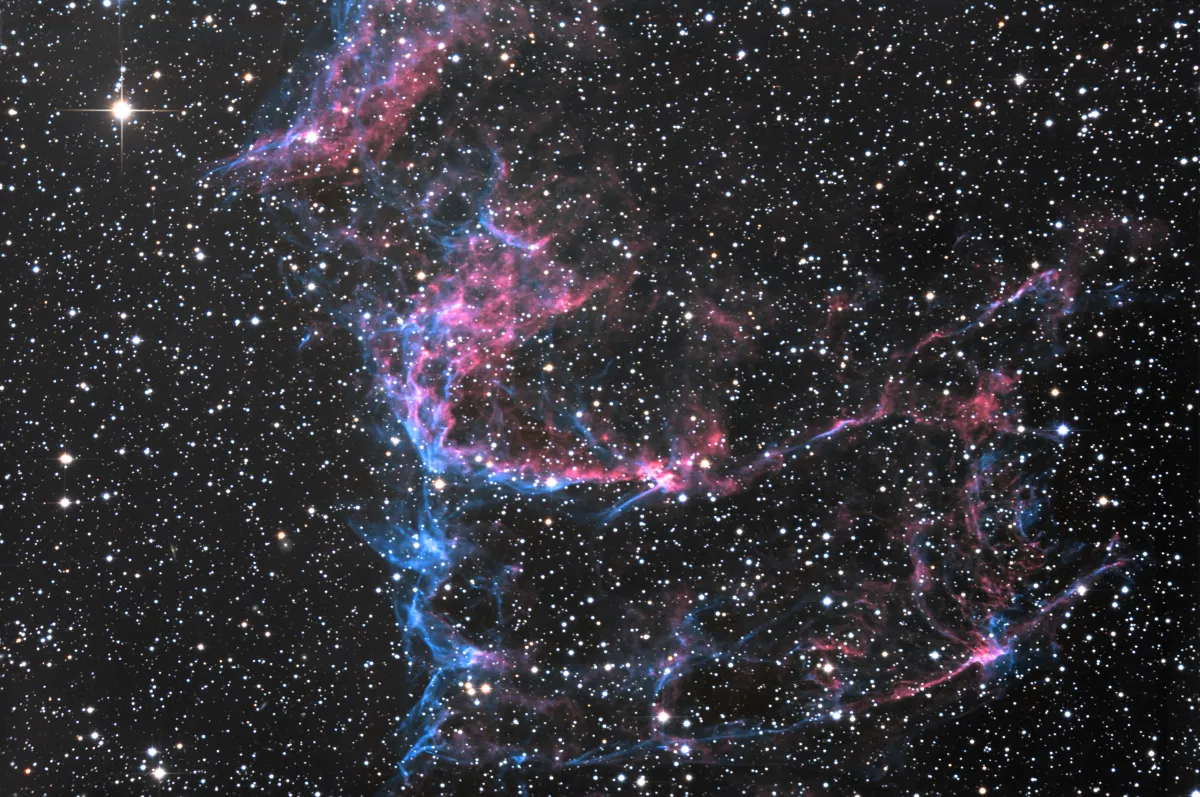
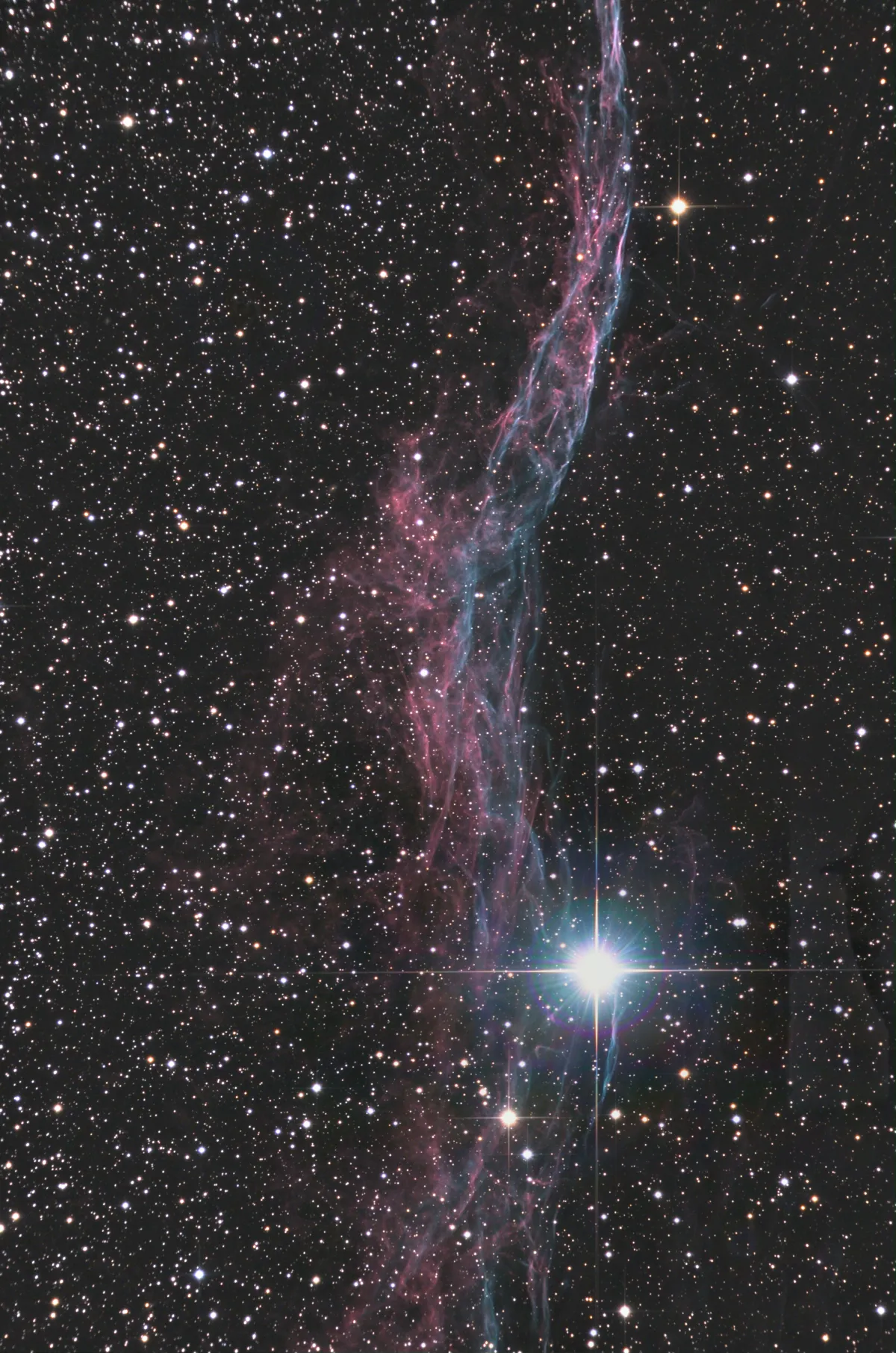
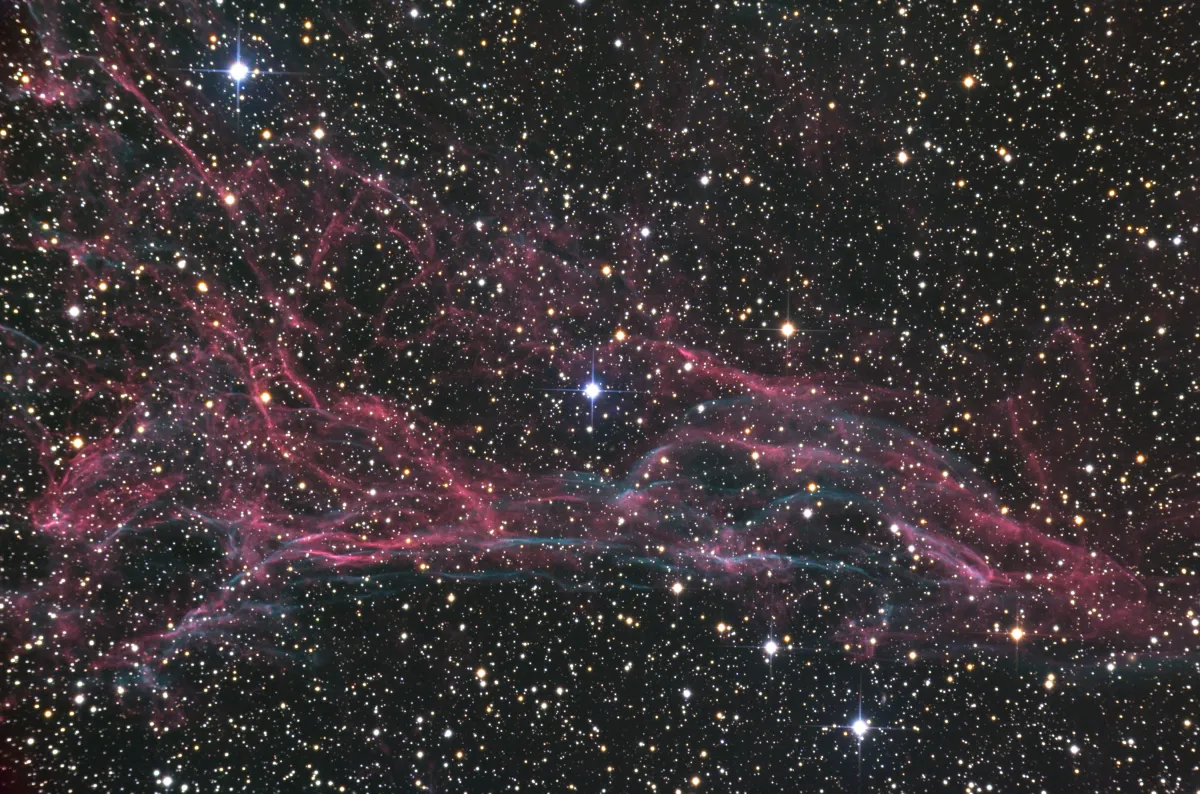
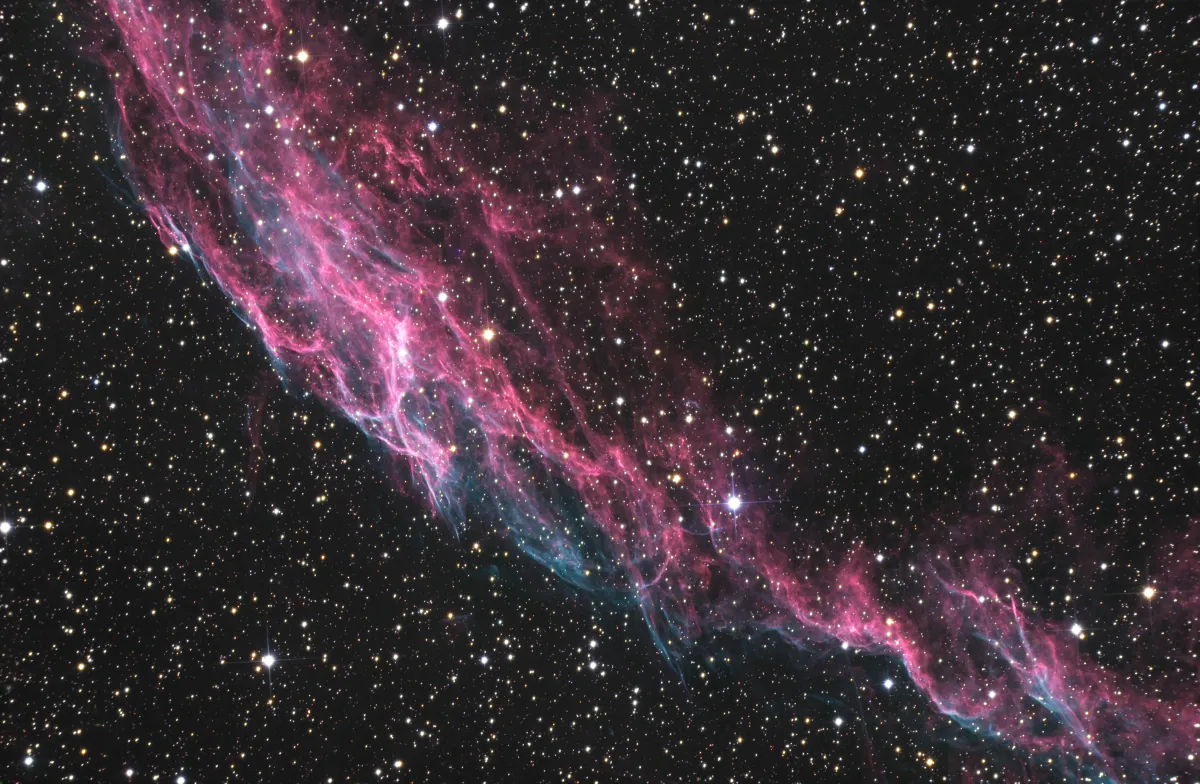
Physical Properties
The visually visible portions of the Cirrus Nebula appear to coalesce into an expanding gas cloud of about 3° apparent diameter. Determining the exact distance is difficult. One finds values from 1300 to 2500 light-years, probably it is close to 1500 light-years. At that distance, the entire nebula is about 70 light-years across.
This supernova remnant is expanding at 0.06 arc seconds annually into a region of interstellar gas and dust, pushing interstellar material before it. The sky inside this arc appears visibly clearer and has more fine stars than outside, which is evident in the region near the bright star 52 Cygni. It is estimated that the supernova probably occurred between 30'000 and 40'000 years ago.
The Cirrus Nebula, like all other known supernova remnants, is a source of radio emission, but is much fainter than the known Crab Nebula in Taurus, which is only 900 years old. Radio emission from the Cirrus Nebula was first discovered by D. Walsh and R.H. Brown at the Jodrell Bank Observatory in England.
The reason for the glow of the nebula still seems to be a mystery. Spectral analyzes showed that the light is fluorescent and that the individual gas plumes have different temperatures of 10'000 to 60'000 Kelvin. However, neither the star energizing the nebula has been identified, nor does a star near the centre of the arc show any post-novaan characteristics. The post-nova is thought to be a close companion of a star near the apparent centre of the Cirrus Nebula.
The western portion of the Cirrus Nebula, NGC 6960, appears to be drifting past the 4.3 mag star 52 Cygni, but the star is known as a foreground object and has no association with the Cirrus Nebula.
This fiber structure is the special feature of this nebula and could not be fully explained. The thickness of such a typical fiber varies from 500 to 700 AU up to 2000 AU, or about 1 to 5 arc seconds. It's possible that these narrow filaments are actually thin luminous surfaces that we're looking at from the side. Such a surface, viewed from the front, would appear invisible to us because of its weak surface brightness. The expansion of the cloud into the interstellar medium possibly contributes to the filament formation, which resembles a large shock front phenomenon. Electromagnetic forces must also be considered. [4, 110, 115, 169]
| Name | RA | Dec | Type | bMag | Dim | MD | Dreyer Description | Identification, Remarks |
|---|---|---|---|---|---|---|---|---|
| NGC 6960 | 20 45 42.0 | +30 43 00 | SNR | 7.0 | 70 × 6 | 0.450 | !! pB, cL, eiF, κ Cygni inv | WH V 15; h 2088; GC 4600; LBN 191; Veil nebula |
| NGC 6974 | 20 51 04.0 | +31 49 54 | SNR | 0.450 | Neb *, neby cE pf | GC 5975; knot in Veil nebula | ||
| NGC 6979 | 20 50 30.0 | +32 01 36 | SNR | 7 × 3 | 0.450 | vF, S, iE, sev F st f nr | WH II 206; GC 4607; part of Veil nebula | |
| NGC 6992 | 20 56 18.0 | +31 44 30 | SNR | 7.0 | 60 × 8 | 0.450 | !!, eF, eL, eE, eiF, bifurcated | WH V 14; h 2092; GC 4616; CED 182B; Veil nebula |
| NGC 6995 | 20 57 10.0 | +31 14 00 | SNR | 7.0 | 12 × 12 | 0.450 | F, eL, neb & st in groups | h 2093; GC 4618; CED 182C; Veil nebula |
| IC 1340 | 20 56 08.0 | +31 02 54 | SNR | 25 × 20 | 0.450 | Possibly conn with h 2093 | part of Veil nebula |
How to find the Supernova Remnant?
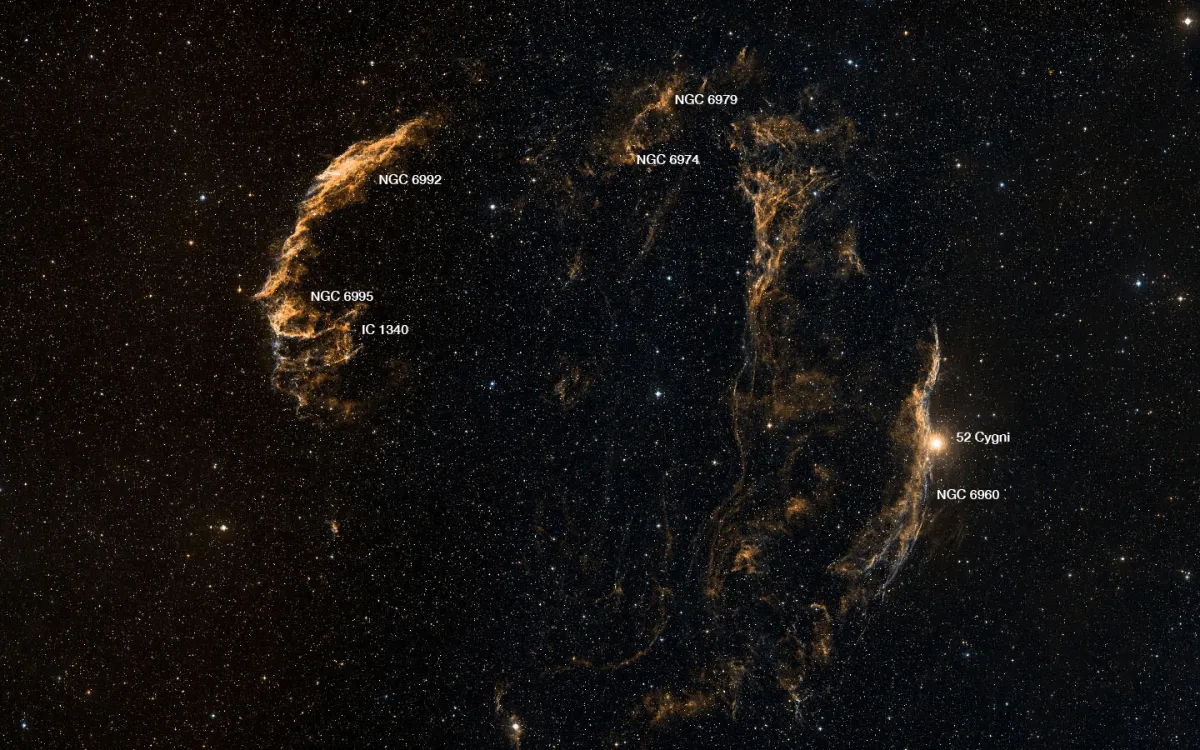
The Cirrus Nebula is very easy to find. Point the telescope at the star 52 Cygni, which is located at the eastern wing of the constellation Cygnus. The star is 4.2 mag bright and still easily visible with naked eye. There lies the western part of the Cirrus Nebula NGC 6960, which passes directly nearby the star. Starting from there, the entire Cirrus Nebula can be explored along the nebulae to the east. At the beginning it is recommended to use an eyepiece with the largest possible field of view to get an overview. An O-III filter greatly increases the contrast between the nebula and the sky background. For some parts, it is worth magnifying higher to see more structure in the nebulae. On 2 August the nebula is in opposition to the Sun and crosses the meridian at local midnight.
Visual Observation
300 mm Aperture: With the Tele Vue 21 mm Ethos eyepiece, you can achieve a field of view of 1.75° at just 1.2 metres focal length. Equipped with an O-III filter, starting from the star 52 Cygni, the extensive parts of the nebula can be explored far beyond the field of view. The Cirrus Nebula is one of my favourite objects with the short Newtonian telescope. — 300 mm f/4 Popp-Newton, Bernd Nies
